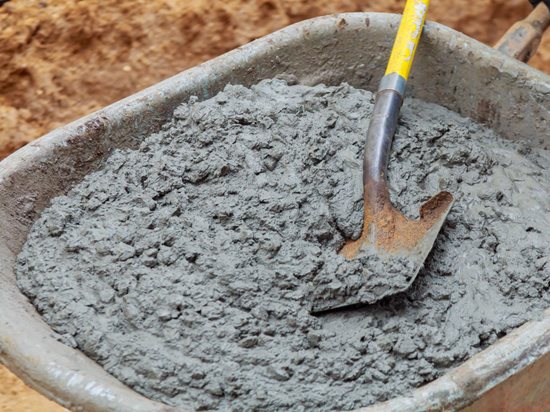Mixing Concrete in a Wheelbarrow: A Comprehensive Guide
Concrete, the ubiquitous building material, forms the foundation (pun intended) for countless structures. But before you can lay the perfect slab or pour a sturdy post, you need to mix the concrete properly. While large projects often involve concrete mixers, smaller jobs can be tackled using a trusty wheelbarrow and some elbow grease. This guide empowers you to confidently mix concrete in a wheelbarrow, ensuring a homogenous mixture for optimal results.
Understanding Concrete: Why Proper Mixing Matters
Concrete is a composite material composed of portland cement, sand, gravel (or crushed stone), and water. Each component plays a crucial role, and proper mixing ensures:
- Strength: A well-mixed concrete ensures a strong and durable final product, able to withstand weight and external stresses.
- Workability: The right consistency allows for easy pouring and manipulation of the concrete during application.
- Uniformity: A homogenous mixture prevents inconsistencies in strength and avoids pockets of weakness within the concrete.
Gathering Your Arsenal: Tools and Materials
Before diving into the mixing process, assemble the necessary tools and materials:
- Wheelbarrow: A sturdy wheelbarrow with a leak-proof pan is essential. Opt for a wheelbarrow with a capacity that suits your project’s needs.
- Shovel: A square-ended shovel is ideal for scooping and transferring dry ingredients.
- Hoe or Rake: A garden hoe or rake is a great tool for breaking up clumps and ensuring proper mixing throughout the concrete.
- Measuring Bucket: A bucket with volume markings allows for accurate measurement of dry ingredients and water.
- Safety Gear: Wear safety glasses, gloves, and a dust mask to protect yourself from dust and splashing concrete.
Choosing the Right Mix: Pre-Mixed or Bagged?
There are two main options for concrete used in smaller projects:
- Pre-mixed Concrete: Available in bags or sacks, pre-mixed concrete combines all the dry ingredients (cement, sand, and gravel) in pre-measured proportions. This is a convenient option for small jobs and requires only the addition of water for mixing.
- Bagged Concrete: Individual bags of cement, sand, and gravel offer more customization but require measuring each component for proper mixing. This option is ideal for larger projects or when you need a specific concrete mix ratio.
Pro Tip: Always refer to the manufacturer’s recommendations on the concrete bag for the appropriate water-to-concrete ratio for your project.
Mixing Magic: A Step-by-Step Guide
Here’s a detailed breakdown of the concrete mixing process in a wheelbarrow:
-
Prepare the Wheelbarrow: Ensure the wheelbarrow pan is clean and free of debris.
-
Measure Dry Ingredients: If using bagged concrete, measure the required amounts of cement, sand, and gravel using your shovel and bucket. Accurately following the recommended ratio is crucial. For pre-mixed concrete, simply empty the desired amount of the mix into the wheelbarrow.
-
Create a Well: Pile the dry ingredients in the center of the wheelbarrow pan, forming a well-like depression.
-
Measure Water: Using your measuring bucket, carefully add the recommended amount of water to the well in the dry ingredients.
-
Mixing the Magic: Here comes the workout! Using your shovel or hoe, gradually incorporate the dry ingredients from the sides of the well into the water. Continuously mix and break up any clumps to ensure all the dry material gets coated with water.
-
Folding and Turning: Once the initial ingredients are combined, employ a folding and turning motion. Scoop the bottom layer of the mixture and bring it up onto the dry pile on the sides. Repeat this folding and turning motion until a homogenous, uniformly colored mix is achieved.
-
Checking Consistency: The ideal concrete mix should have a damp, earth-like consistency. It should hold its shape when molded but be workable enough to pour and manipulate. If the mix seems dry, add a small amount of water at a time and mix thoroughly after each addition. Avoid overwatering, as this can weaken the concrete.
-
Mixing Time: Plan on at least 2-3 minutes of continuous, vigorous mixing to ensure a well-combined concrete mixture.
Pro Tip: For larger batches, mix in sections. Add half the dry ingredients, then half the water, and mix thoroughly. Repeat with the remaining dry ingredients and water to ensure complete mixing.
Beyond the Basics: Additional Tips and Techniques
- Mixing in Stages: For larger projects requiring multiple batches of concrete, mix them in stages to avoid the concrete stiffening prematurely.
- Cleaning Up: Wash your tools and the wheelbarrow thoroughly immediately after use. Dried concrete.




